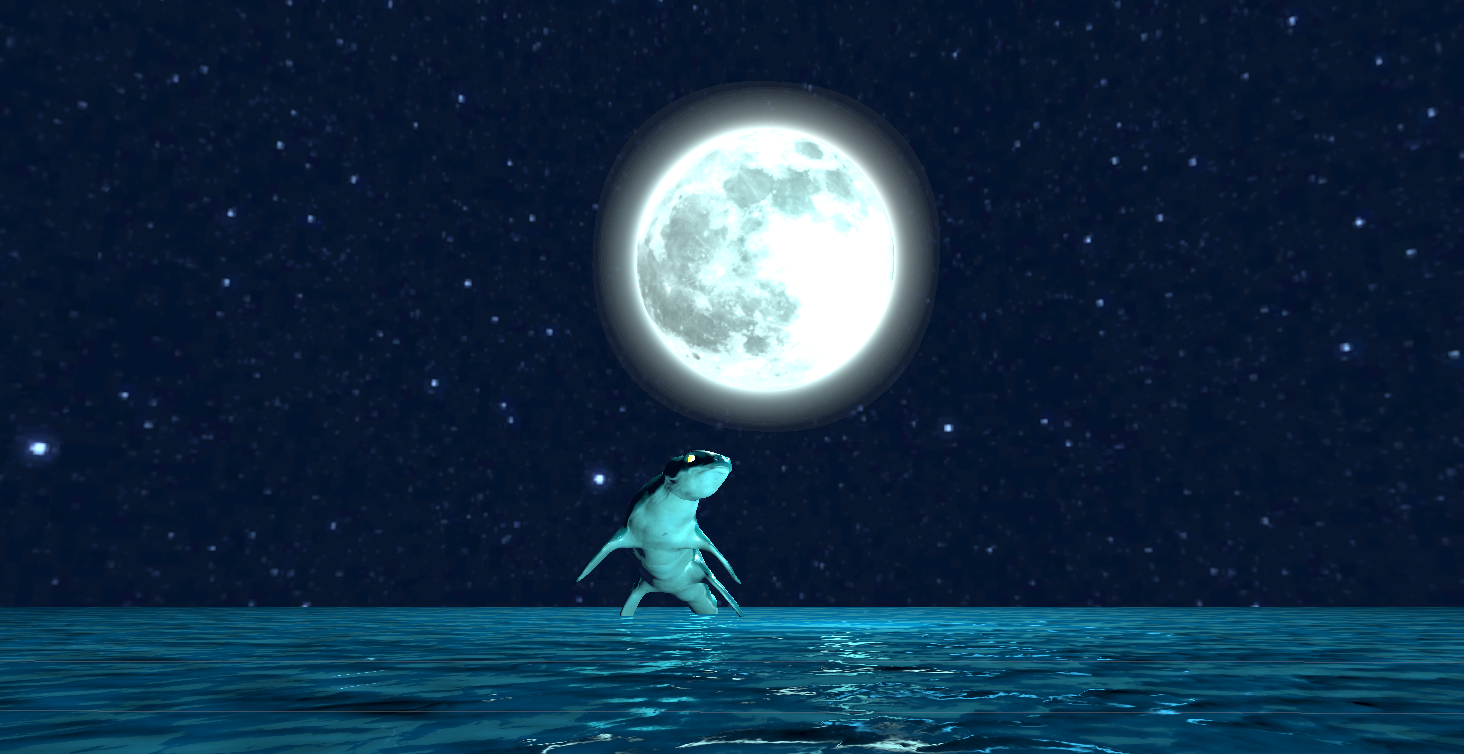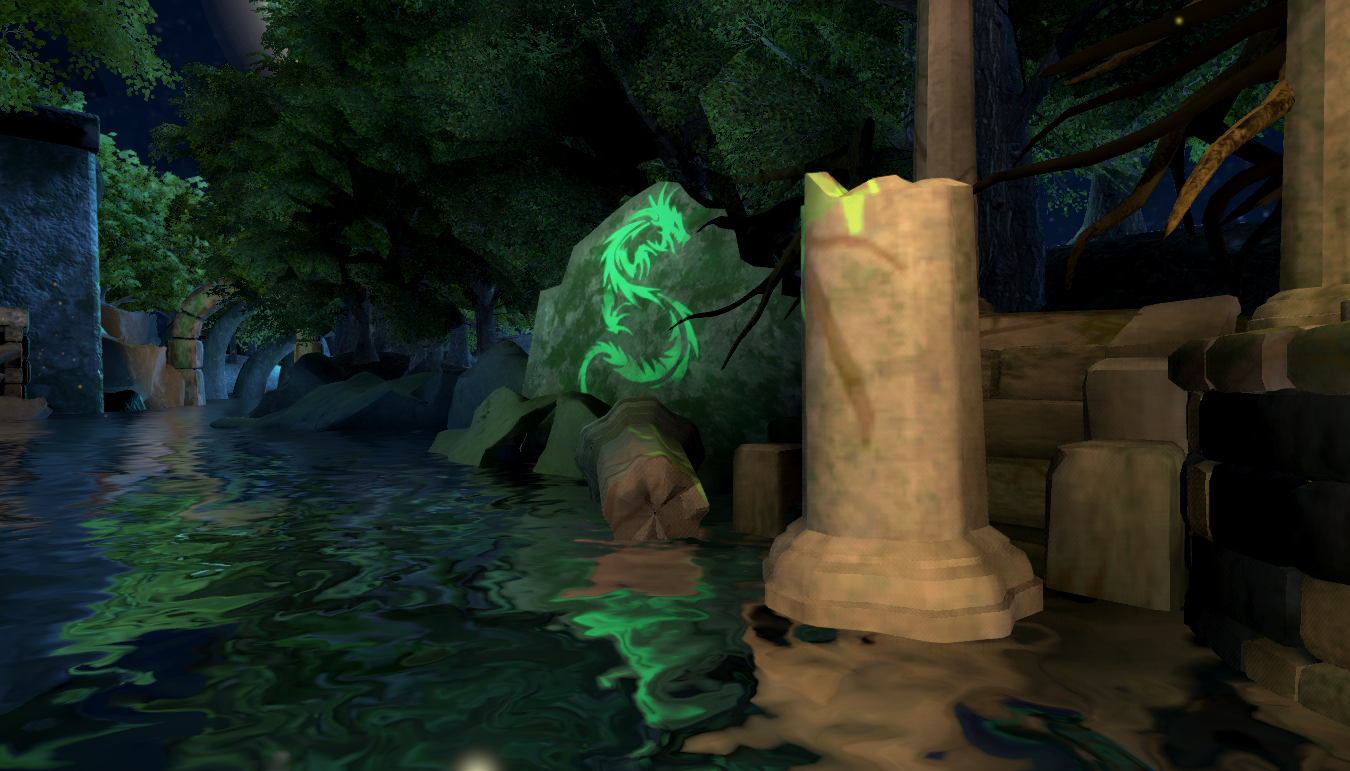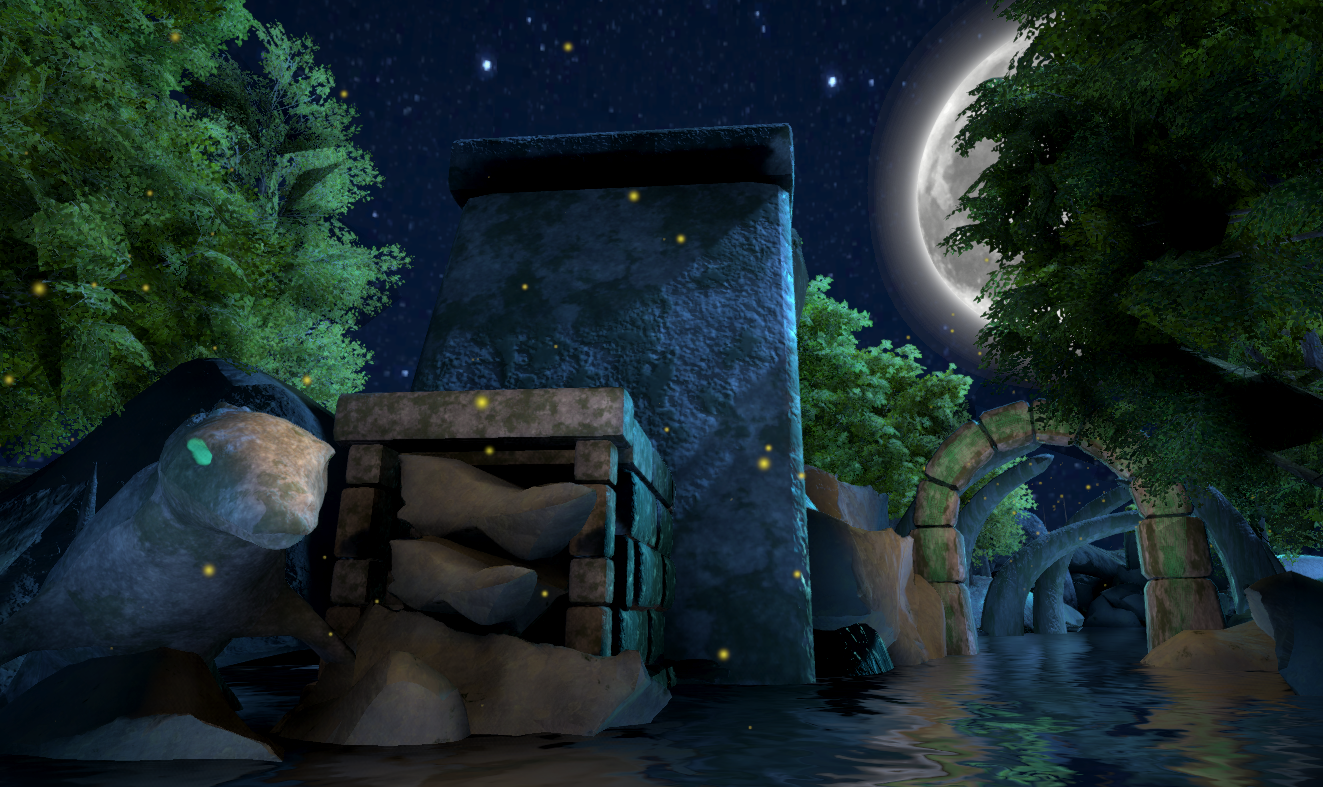Overview:
Huanca is a VR kayaking experience where guests can explore the breathtaking night views of a river in Puerto Rico, and follow the clues along the path to find the guardian of the sea, Huanca.
Design Challenge: Design a VR experience for naive guests
Contribution: Usability testing, Interaction Design, 3D Art, 2D Art
Platform: HTC Vive
Project Duration: 2 weeks, 2018
Team: 2 Artists, 2 Programmers, 1 Sound Designer
Tools: Maya, Unity, Photoshop, Illustrator
Demo Video
A VR Kayaking Experience with a Physical Paddle
Inspired by the Bahía Bioluminiscente (Bay of Bioluminescence) in Puerto Rico, this 3 minute journey starts when guests begin kayaking with a physical paddle. Along the river path, guests can enjoy their time exploring the scene, as well as collect the visual clues from the temple remains to make their way to a cave. After exiting the cave, guests will view an open sea area where they can interact with the mythical creatures that reside there.
Key Scenes
Designing an Intuitive VR Experience in 2 Weeks
In a team of 5, we developed this 3 minute kayaking experience in VR by utilizing an HTC Vive headset, as well as a physical paddle with 2 trackers attached to each end. Our guests were invited to sit on a swivel chair and start their journey once they began paddling. Our high-level goals for this interactive experience were:
Make it intuitive and friendly for the most naive users
Use indirect control instead of voice-over instructions to give them guidance
Provide them with the illusion of freedom
To lower the barriers to entry and reduce the learning curve for people who have never experienced VR before, we decided that we would not use any controllers or buttons in this world. In an effort to make the on-boarding part as intuitive as possible, we decided that paddling would be the sole interactive element for this VR experience.
Prototyping, Testing, Iterating (and Repeat) from Week 1
Once we had the basic structure of the experience and the mechanics of the interaction down, we immediately started with some early tests. I generated the testing protocols and coordinated testing sessions for 14 people, ages 4-28. We made 8 iterations within 2 weeks of the development process. We kept iterating and testing to solve the following challenges:
Reach target frame-rates
Reduce dizziness
Use sound and visual cues to direct guests’ attention to landmarks
Utilize props and environment to keep the narrative consistent
Make interactions feel “right” and intuitive
Adjust the terrain paths and experience length to make sure guests would not be exhausted before they enter the open sea area
Usability Testing
Notes from Testing
Takeaways
Here are some of the lessons I learned from this development process:
Give guests immediate feedback for their interactions. Use sound and visual effects to reward them for doing things right.
Consider the physical constraints and limits when designing an immersive experience that involves exercise. Especially when the guests have to ride a bike, throw objects, and paddle constantly, they may get physically exhausted.
It’s okay to think big and be bold when designing for VR interactions and experiences. When they are in this immersive world, unexpected interactions and responses could become some “wow” moments.
In order to reach the ideal speed of paddling, constant adjusting and testing are necessary.
People expect everything they touch to respond to them. So if that is within the scope of development, it could be very pleasing and powerful to add in these expected responses. When the virtual world reacts to the guest like how the real world would, guests might be surprised and gain a personal connection to the virtual world.
A powerful approach to designing experiences for VR is to work within the constraints and advantages of the medium, rather than adapting mechanics and interactions from existing games outside the VR realm.


